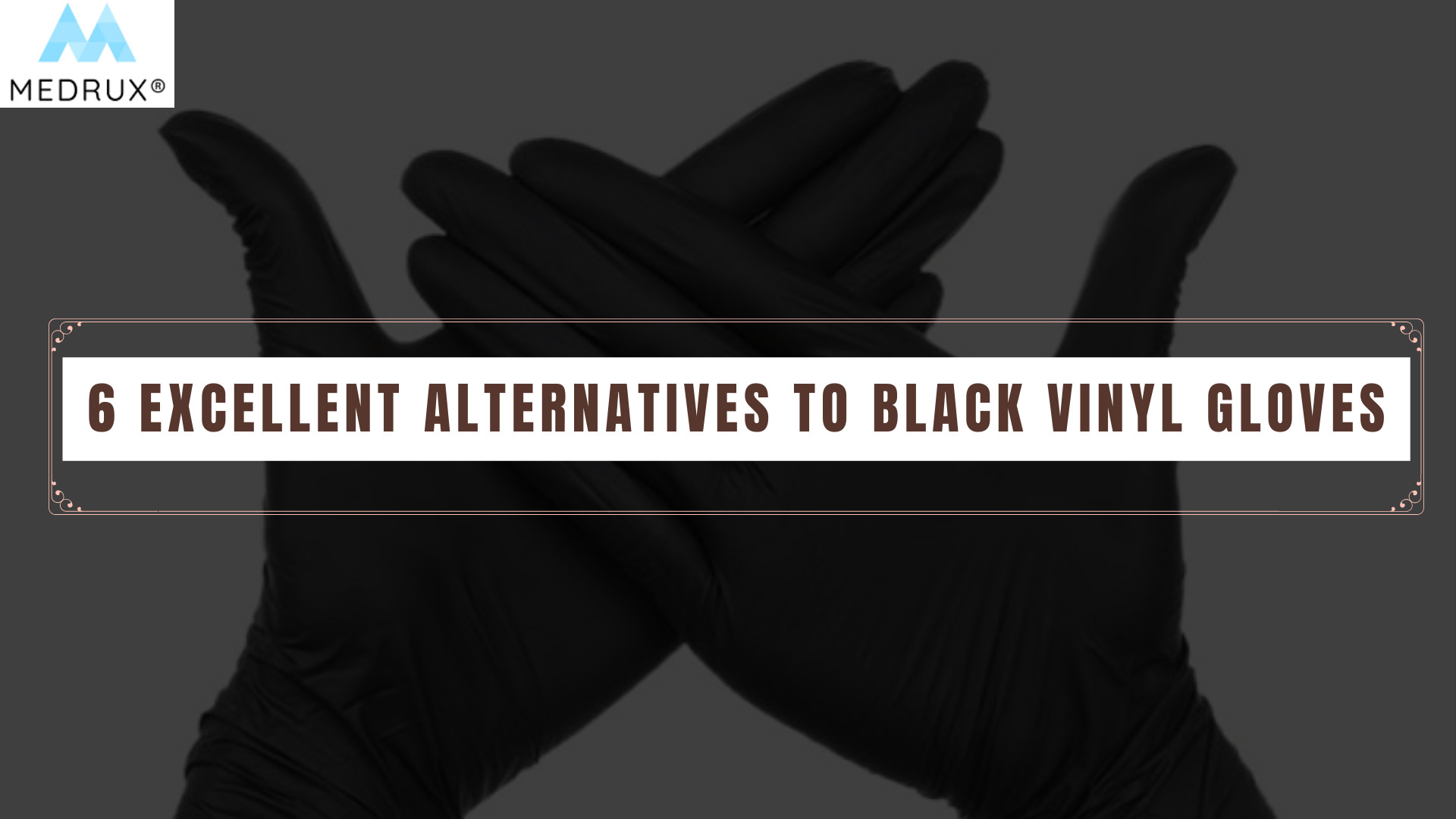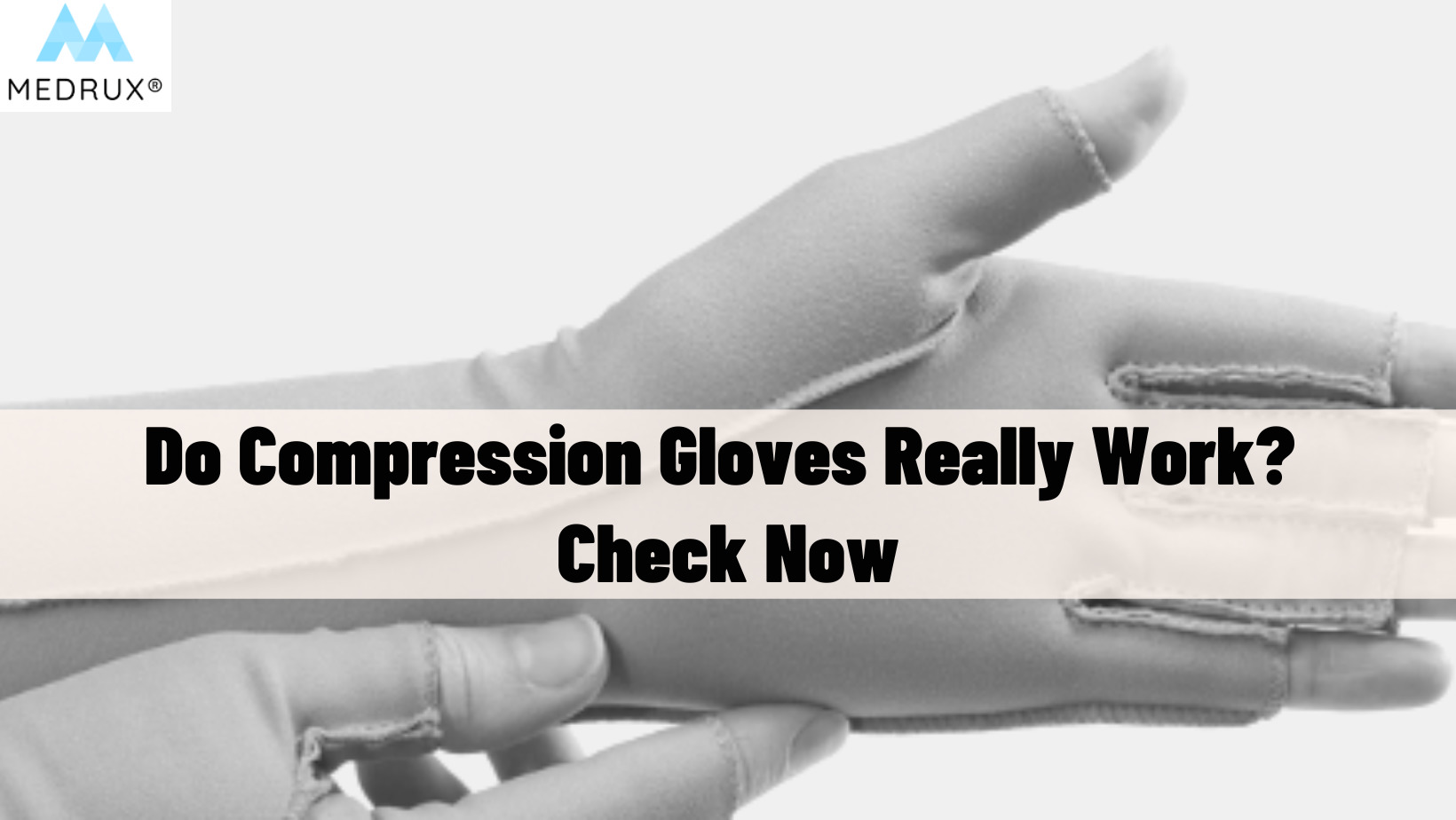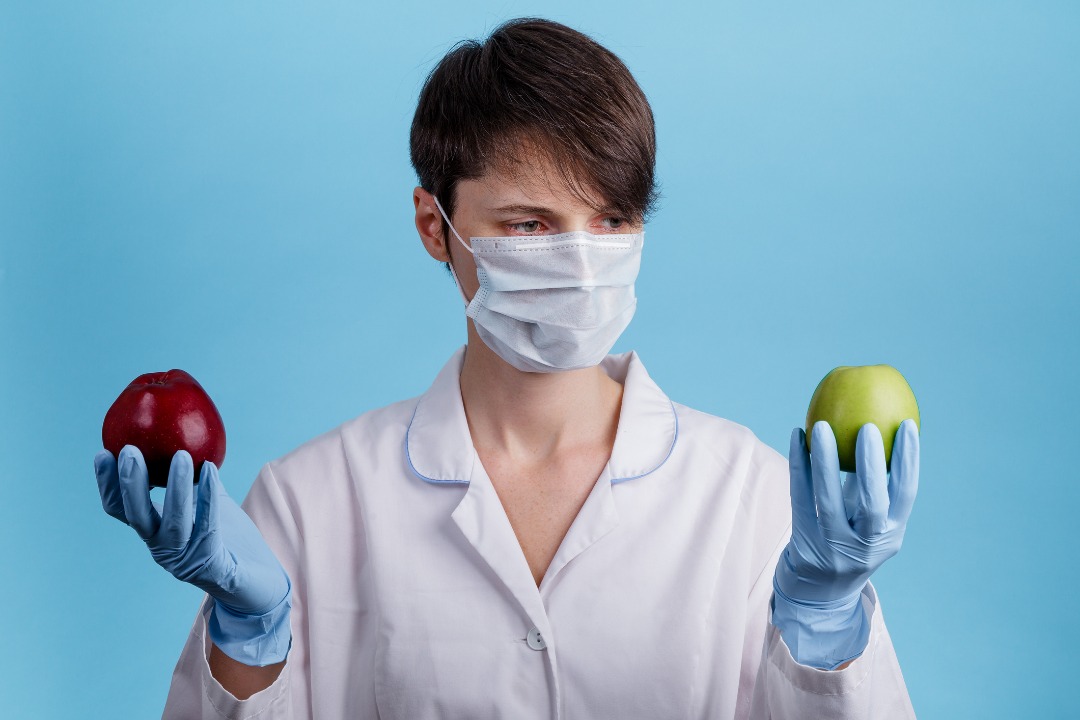Have you ever heard about “Medical-grade gloves“?
I recall the first time I heard that phrase. I thought it was obvious what it meant, “gloves used in hospitals and clinics,” I said.
However, medical-grade gloves are more than just gloves used in hospitals.
Medical grade gloves are a highly specialized type of gloves. They undergo several tests to ensure that they are of high quality.
Thus, these gloves offer the optimum protection there is.
In this article, we will discuss everything related to medical gloves.
First, we will tell you about their origin and what the word medical grade glove truly means. Then, we will discuss the different types of medical gloves and how to use them. Afterward, it’s time to learn about medical gloves’ materials.
Hold on; we are not there yet!
Additionally, we will inform you about the features of medical-grade gloves and the tests required to ensure their quality. Finally, you will find tips that help you purchase, store, and use medical-grade gloves.
See!… everything about medical-grade gloves.
Where did the idea for gloves come from?
Were you ever curious about that?… Let us tell you the story of how the glove industry began.
Once upon a time in Baltimore, Maryland, specifically at Johns Hopkins Hospital, a man named William Stewart Halsted worked. Halsted was a brilliant surgeon who cared about his patient’s safety.
Therefore, he used to make his assisting staff sterilize their hands thoroughly before every procedure.
But one of his nurses suffered a lot because of his methods.
Caroline Hampton had severe contact dermatitis because of all the chemicals. So, Halsted thought of a way to help her, and he came up with the idea of coating her hands.
Consequently, Halsted invented the gloves and managed to advance the practice of medicine. And, he married his beloved Caroline too… but that’s another story!
However, this story tells us that gloves were invented to be used in the medical field.
What are medical-grade gloves?
Medical grade gloves are a part of personal protective equipment (PPE) used to protect oneself and others from infection. Therefore, they are an essential part of aseptic measures and infection-control strategies.
The primary use of gloves in the medical field is to prevent cross-contamination.
Thus, they help healthcare workers avoid being in direct contact with bodily fluids. Additionally, gloves protect patients from catching an infection during their hospital visits.
So, medical glove manufacturers follow instructions from their local FDA to ensure the gloves’ quality. Then, medical gloves undergo several tests before they can reach the market.
Thus, to be considered medical-grade gloves, they must have Acceptable Quality Limits (AQL) of 2.5 or lower.
Bottomline
Medical grade gloves undergo certain tests and adhere to specific requirements to ensure quality. Thus, they prevent the spread of infections in medical settings.
Are all medical-grade gloves similar?
Medical grade gloves differ in their use; thus, they also differ in their features.
Yet, they are all disposable and are meant to be used once. Additionally, they are all powder-free since 2017.
Moreover, they can be divided into examination gloves, surgical gloves, and chemotherapy gloves.
-
Examination gloves
Examinations gloves are meant to be used in non-surgical settings.
However, they provide more protection and strength than industrial gloves. So, they are more expensive than regular gloves.
Additionally, examination gloves have to follow FDA requirements. Therefore, this makes them a candidate to be used in the food industry. Yet, they are lower in their quality than surgical gloves.
Examination gloves are also subdivided into sterile gloves and non-sterile gloves.
-
Sterile examination gloves
Examination gloves undergo a process called sterilization to be considered sterile.
What is sterilization? You ask…
When you are sterilizing something, it means you are removing all the living organisms from its surface. Consequently, after this process is done, all the bacteria, viruses, and fungi on the glove’s surface are dead. Furthermore, sterile gloves need to have an AQL lower than 1.
Sterilization takes place through one of these three methods:
- Radiation through gamma rays
- Autoclaving is where the heat and high pressure kill the living organisms
- Chemically through ethylene oxide
Accordingly, sterile gloves are thoroughly examined afterward to ensure their quality. Thus, this guarantees that these gloves minimize the risk of infections and contaminations.
Thus, sterile examination gloves can be used in:
- Minor procedures
- Dental procedures
- Preparing pharmaceuticals
- Medical examinations
Bottomline
Sterile examination gloves undergo sterilization to ensure no living organisms are on their surfaces. Thus, they are used in medical settings with direct contact with bodily fluids. This protects healthcare staff and patients.
-
Non-sterile examination gloves
Non-sterile gloves are made from the same material as sterile ones. Yet, they don’t go through the decontamination process.
However, they are still used in the medical setting to protect healthcare providers and patients. However, their AQL ranges from 1 to 2.5.
Therefore, non-sterile examination gloves are more expensive than industrial gloves. Also, they are stronger and can withstand more pressure.
Therefore, examination gloves are used in:
- Measuring blood pressure
- Collecting blood samples
- Administering IV or IM injections
- Cleaning spills
Additionally, non-sterile examination gloves are used in the food industry. They provide better protection and ensure food safety.
Bottomline
Non-sterile examination gloves are not sterilized. Yet, they can be used in the medical field and some of the industrial areas. This is due to their higher quality.
Non-sterile examination gloves are adequate for measuring blood pressure or cleaning spills.
-
Surgical gloves
Surgical gloves are medical-grade gloves that healthcare providers wear in operation rooms. All staff members are required to wear them during significant procedures.
Thus, surgical gloves are a necessary PPE. They are mainly used to prevent the contamination of surgical wounds.
Therefore, all surgical gloves are not only sterile but are also individually packed in pairs. Additionally, surgical gloves are of the highest quality and strength.
However, a drawback of surgical gloves is that they require precise sizing and a perfect fit.
Double gloving
Although surgical gloves are more protective, surgeons usually double-glove during most surgical procedures. Yet, these days dual layered gloves are available for purchase.
Yet, to reduce the sweating from wearing the gloves too long, one can wear a cotton glove underneath them. Also, surgeons can wear sterile aloe gloves underneath surgical ones if they suffer from dry skin.
However, it is beneficial to wear one light-colored and one dark-colored glove. This contrast will make it easier to spot punctures and tears in the outer glove.
Bottomline
Surgical gloves are a type of medical-grade gloves that have higher resilience and offer the most protection. Moreover, they are sterile and sold in individual packs to maintain their sterility and integrity.
Still, surgeons usually double-glove to ensure maximum protection.
-
Chemotherapy gloves
Chemotherapy gloves are medical-grade gloves approved for handling hazardous drugs and chemicals. Therefore, these gloves undergo several tests with dangerous drugs before approval.
Chemotherapeutic drugs
Chemotherapeutic drugs act by disturbing the cell cycle to prevent its duplication. Unfortunately, these drugs can’t differentiate between healthy and malignant cells. Consequently, they are harmful to healthy cells.
These drugs are beneficial for patients but can harm healthcare workers’ lives. Moreover, exposure to these chemicals can impact healthcare providers’ heart, lungs, liver, and other organs.
Therefore, handling chemotherapeutic agents requires maximum protection.
Thus, the breakthrough time of these gloves should be known to users to ensure their safety. This is the time a chemical takes to penetrate the gloves. This time should be stated clearly on the box.
So, healthcare providers should change their chemotherapy gloves when they reach breakthrough time.
However, it is recommended that chemotherapy gloves be changed every 30 minutes.
Additionally, the manufacturer should provide the user with a list of the hazardous drug the gloves can withstand. Since the testing process requires that the gloves be tested using nine different medications, this should be no problem.
Not unlike other medical grade gloves, chemotherapy gloves are:
- Sterile
- Non-powdered
- Disposable
Yet, they are also:
- Long cuffed to cover the sleeves
- Thick to prevent chemical penetration
- It needs to be changed every 30 mins
Bottomline
Chemotherapy affects both healthy and cancerous cells. Therefore, healthcare providers need to handle chemotherapeutic agents with extra care. Additionally, they should ensure that they:
- Double glove
- Wear thick chemotherapy gloves
- Change their gloves frequently
Guidance for medical glove use
- Your gloves are a carrier for different kinds of living organisms. Thus, they should be disposed of after every use before leaving the area they were used in.
- Even medical gloves don’t provide 100% protection. So, washing your hands before and after wearing them is crucial.
- Any skin cuts on the hand should be covered before donning the gloves.
- Wearing medical-grade gloves is a must when handling blood, touching mucus membranes, or dealing with bodily fluid.
- Medical gloves must be disposed of and changed before seeing another patient.
- Gloves should be carefully inspected for tears before donning.
- The donning process should follow safety procedures.
- Contaminated gloves should be collected and incinerated.
- You can’t share or disinfect your medical glove.
What are the materials used in making medical gloves?
Medical-grade gloves should have more strength to prevent them from splitting or tearing. Therefore, some materials are preferred when manufacturing medical-grade gloves.
However, these materials vary in their durability, sensitivity, and level of protection.
Medical-grade gloves are made from Latex, Nitrile, Vinyl, Neoprene, and Polyisoprene.
1. Latex gloves
They are the oldest gloves there are. They are the only medical-grade gloves made from natural rubber.
Pros of latex gloves
- They are highly sensitive
- Allow for better grip and manipulation
- Latex gloves are stretchy and can handle stress
- Effective against micro-organisms
- Found in a variety of colors. Looking for differences between them? Click here.
- Found in extra-long design. More about extra long latex gloves? Click here.
Cons of latex gloves
- Latex can cause allergy in some people that can lead to anaphylactic shock
- Prolonged exposure to latex can cause dermatitis
- Weak in resisting chemicals
2. Nitrile gloves
Nitrile gloves are made from synthetic rubber. However, they have superior qualities that make them a great choice.
Pros of nitrile gloves
- They resist punctures
- Provide high chemical resistance
- Have longer shelf-life
- It doesn’t cause allergy
- Found in many colors. know the difference here.
Cons of nitrile gloves
- They have lower elasticity
- The gloves take time to conform to the hand’s shape
- Require precise sizing
3. Vinyl gloves
Vinyl gloves are another latex-free alternative. These gloves are also manufactured from synthetic rubber.
Pros of vinyl gloves
- They are the cheapest
- The gloves resist a wide array of chemicals
- Vinyl medical gloves are soft and comfortable
Cons of vinyl gloves
- They are not a snug fit, thus offering lower protection
- Vinyl is not as puncture resistant as latex and nitrile
Therefore, vinyl medical-grade gloves are the least favored. Confused about vinyl gloves and latex? Click here for our comprehensive guide.
4. Neoprene gloves
Neoprene gloves are a synthetic alternative that is similar to latex.
Pros of neoprene gloves
- These gloves offer the same level of chemical resistance as nitrile gloves
- They are highly resistant to punctures
- Highly comfortable and provide a latex-like snug fit
Cons of neoprene gloves
- Less elastic than latex
Additionally, neoprene gloves are cheaper than nitrile but more expensive than latex.
5. Polyisoprene gloves
Polyisoprene gloves are latex-free. Thus, they are safe to be used with all patients. Additionally, they are as elastic and durable as latex, so they are the perfect alternative.
However, polyisoprene gloves are the most expensive.
Chlorinated gloves VS Non-chlorinated gloves
In the old days’ gloves were treated with powder to ease donning. Yet, in 2017, the FDA banned all powder use in drugs. Therefore, an alternative was much needed.
As their name indicates, chlorinated gloves are subjected to chlorine to achieve the same result as powder treatment. Thus, chlorinated gloves are less irritant to the skin and easy to wear and take off.
However, non-chlorinated gloves have a longer shelf-life and don’t smell like chlorine.
Looking for an inclusive guide on glove finishing and chlorination? Click here.
Bottomline
Latex and nitrile medical grade gloves are the most used in the medical field. These disposable gloves provide durability, sensitivity, and strength and are cost-effective.
Neoprene and polyisoprene are good latex-free alternatives. However, the former doesn’t provide the level of elasticity required in the medical field. At the same time, the latter is too expensive.
Vinyl gloves are also used in the medical field. Yet, it is the least favorite choice.
All medical gloves can be either chlorinated or non-chlorinated according to preference.
What are the key features of medical-grade gloves?
When you are purchasing medical gloves, you should consider the following features.
-
Tensile strength
This refers to the glove’s ability to resist punctures, cuts, and abrasions. Healthcare providers handle sharp and pointy objects all the time.
Thus, medical-grade gloves should be more robust than regular gloves.
-
Thickness
This point relates to the previous one. Thicker gloves can resist tears and punctures.
Additionally, they provide better chemical resistance and offer more protection.
But then, the thicker the glove, the lower its sensitivity.
Therefore, the thickness of medical-grade gloves needs to be well-balanced. This will ensure protection and maintain sensitivity.
-
Tactile sensitivity
Sensitivity is crucial if you are feeling for a vein or performing surgery. Medical field work is delicate and requires unimpaired touch. Therefore, medical-grade gloves must be lightweight.
-
Comfort and snug fit
Healthcare providers wear gloves for long periods.
So, if their gloves are not comfortable enough, this will create an obstacle. Loose and uncomfortable gloves hinder one’s ability to perform tasks well.
Additionally, tight gloves can easily tear. They can even lower the blood circulation in one’s hand. On the other hand, loose gloves subject the wearer to the risk of infections.
Thus, it’s better to choose the right size for your glove.
-
Color
Some industries might not think twice about their colored glove choice. However, in the medical field, color coding is essential. This helps healthcare providers differentiate between latex and latex-free gloves.
Additionally, every department can have its color to minimize cross-contamination.
Furthermore, colored gloves help surgeons detect tears and punctures when double-gloving.
Another upside to color coding is that it can be used to help patients. For instance, some patients have white coat syndrome, so wearing a colored glove can ease their stress.
Also, colored gloves can be used to make statements. For example, pink gloves are used to support breast cancer patients. At the same time, purple gloves are popularly used in chemotherapy administration.
-
Shelf life
This might not be as critical as the other features. Yet, it is essential to consider the shelf life of your medical-grade gloves when purchasing bulks.
It’s easy to detect compromises in your gloves. The gloves will usually tear or crack.
Bottomline
Medical-grade gloves should be durable to resist punctures. They should be thick enough to offer protection yet thin enough to allow for touch sensitivity.
Additionally, it’s better if your medical gloves are form-fitting and color-coded.
How is the quality of medical gloves ensured?
To ensure medical gloves are suitable for use, local FDAs have them tested. Therefore, all medical gloves should have AQL lower than 2.5.
-
What is AQL?
Acceptable Quality Limits (AQL) is a percentage-based method to indicate the number of pinholes in gloves. Low AQL demonstrated higher quality.
To perform this test, random samples are selected first. Then, the gloves are filled with water and observed to determine the number of pinholes.
However, gloves that fail this test are accepted but are not approved for medical use.
AQL is not the only test that a medical-grade glove has to pass. There’s also:
-
Tensile test
In this test, the gloves are stretched until they break. The tests determine the force needed to break the glove and the elasticity of the glove.
-
Viral barrier test
This test takes place by submerging the glove in a bacteriophage solution or placing the key inside the glove.
Then, samples from the other side of the glove are taken at set intervals. Samples are taken until a bacterial count is present on the other surface of the glove.
Therefore, this test is used to determine the penetration time of the glove. Which do the bacteria take the time to move from one side to the other
-
Heat degradation test
The gloves are subjected to different temperatures. This helps determine at which temperature they begin to degrade.
-
Puncture resistance test
This test is used to determine the force required to puncture a glove. Therefore, a probe creates a sharp-edged tear in the glove.
-
Residual powder test
This test is essential for surgical gloves to ensure that they are powder-free. This test takes place by washing the gloves, filtering the water used, and finally weighing the residuals.
-
Physical dimension examination
This examination is used to ensure accurate sizing. The length of the glove is measured from the inside. The width is the distance from the index finger’s base to the thumb’s base.
Bottomline
Local FDAs subject medical grade gloves to determine their elasticity, strength, durability, and puncture resistance. Additionally, they test them to ensure they are powder-free and accurately sized.
How to choose suitable medical-grade gloves?
Now that you have all the information on medical-grade gloves, you might consider purchasing some. Here are some questions you might want to consider before buying your bulk.
- Am I looking for examination, surgical, or chemotherapy gloves?
- What is the glove material I want to get?
- Can I get some samples from a manufacturer to help me choose?
- What does my staff prefer?
- What is the thickness of the gloves I want to purchase? And where will my staff use them?
- Do I want chlorinated or non-chlorinated gloves?
- What are the available sizes? And how much should I get from each size?
- Am I looking for specific colors, or should I purchase blue ones?
We can’t tell you which gloves to buy. Yet, these questions will guide you through the purchasing process.
So, answer them carefully
Some guidelines for labeling and storing medical-grade gloves
Since you are serious about getting medical-grade gloves for your institution. We believe you should learn about labeling medical-grade gloves to ensure you buy the right ones.
The glove box should:
- Be accurately labeled. This means that the box should state clearly whether these are exam gloves, surgical gloves, or chemotherapy gloves.
- Indicate whether the gloves are sterile or not.
- Mention that they follow manufacturing standards if they are surgical gloves.
- State the hazardous drugs the gloves can withstand in the case of chemotherapy gloves.
Have you already made your purchase?
Great, let us offer you some advice on how to store medical-grade gloves.
Storage Tips:
- Medical-grade gloves should be left in their original packaging.
- Keep the gloves away from ultraviolet light and direct sunlight.
- The gloves should be placed in a low-humid environment.
- Additionally, store away from heat.
Bottomline
Make sure the gloves you buy are accurately labeled. All the information you need should be written on the box. Then, store them in a low-humid and cool environment to maintain their integrity.
Do you know how to don and doff your gloves?
The primary purpose of wearing medical-grade gloves is to lower the risk of infections. However, you can spread diseases everywhere if you don’t know how to put on and remove your gloves.
So, here are some quick instructions to help you don and doff your gloves safely.
Donning
- Wash your hand
- Choose gloves that are the right fit for you
- Pull them over your hand and make sure they cover your wrist
- Repeat with your other hand
Doffing
- Pinch the glove of one hand near the wrist
- Peel the glove off, making sure it is inside out (careful not to touch your skin)
- Hold the glove you removed in the palm of your gloved hand
- Insert two fingers under the cuff of the unremoved glove
- Peel this one off as well, also making sure that it is inside out
- Your first glove should be inside the second one by now
- Dispose of them in the designated bin
- Wash your hands
Final notes
Medical grade gloves are high-quality gloves used in the medical field to ensure safety. However, some types of medical gloves can be used for industrial purpose.
This is because they are manufactured using latex, nitrile, vinyl, neoprene, and isoprene.
Yet, some medical-grade gloves are used for particular purposes, like surgical and chemotherapy gloves. That is why all medical gloves are subjected to thorough testing before they are approved.
Nonetheless, gloves that fail FDA standards for medical grade gloves can be used in industrial settings.
Lastly, in this article, you will find tips on purchasing medical-grade gloves, how and when to use them, and how to store them.
Hajar Nagdy is a microbiologist and a lecturer. Nagdy holds a Bachelor’s degree in the fields of microbiology and environmental sciences, and she is now a M.Sc. candidate in microbiology. In her free time, she can be found listening to classical music, reading interesting scientific articles, running a charity, or traveling across Europe.








